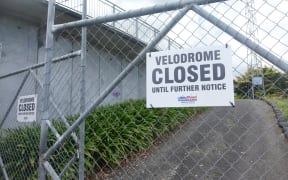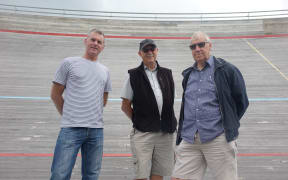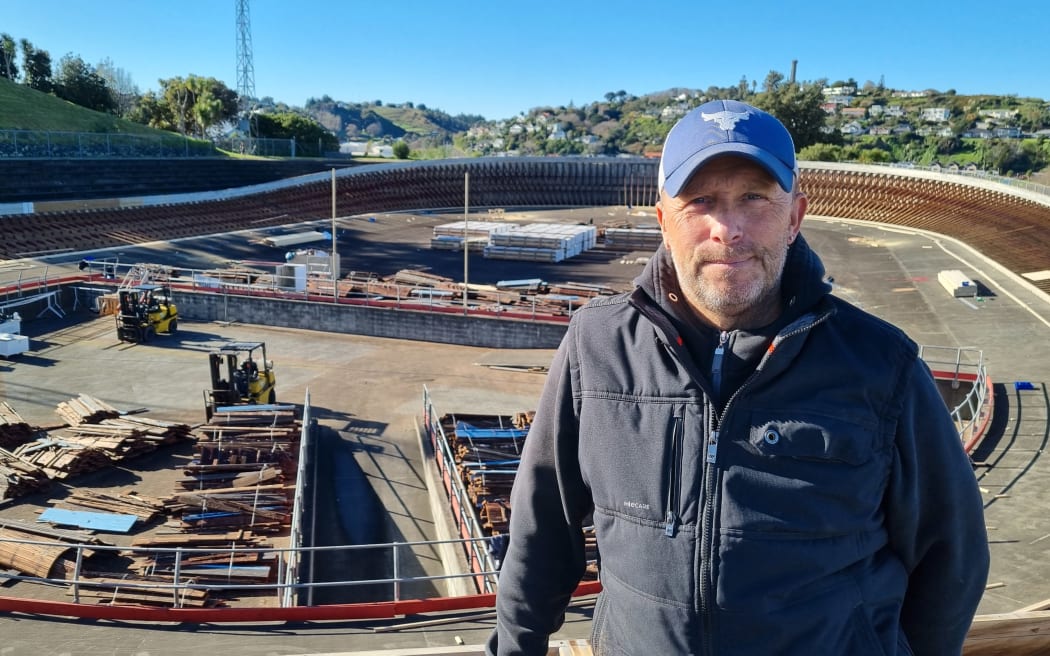
Velotrack's Pete Jacques says the council missed an opportunity when it decided not to put a roof on the velodrome. Photo: RNZ / Robin Martin
The contractor laying the new track at the Whanganui Velodrome says the city missed an opportunity by not putting a $20 million roof over the complex.
Instead the African hardwood track installed in 1995 is being replaced with engineered pine with a 50-year life span.
The Whanganui District Council voted against a roof in 2021, saying the multi-use option was too expensive, choosing instead to relay the track for $2.6 million.
Germany company Velotrack has now removed the track and begun nailing thousands of 30 millimetre-wide lengths of Accoya timber into place.
Laid end-to-end they would stretch 75 kilometres.
Spokesperson Pete Jacques, a former professional British track cyclist, told RNZ the multi-use option was the way to go.
"Yes, 100 percent. By not backing the Raise the Roof campaign fully I believe it's taken away community use and that's just from the experience we've got from around the world."
Jacques said 36 different sports could use the in-field of a covered velodrome as well as events.
"Everything from taekwondo to gymnastics, to wheel chair rugby, indoor bowling where [they] lay the carpet out, boxing, karate, badminton, basketball, futsal, five-a-side football. Then as well exhibitions and even car shows."
The exotic hardwood track was being replaced with something closer to home, he said.
"The timber we are using is actually an engineered material, so it's called Accoya and it's a timber that's been developed in Holland.
"It's actually New Zealand pine that they ship all the way to Europe because the process is only done in Holland and then they ship it all the way back.
"They take away everything that can be affected by the weather. The starches, the sugars, the water and anything that can be eaten by termites as well.
"Then they inject with a vinegar type acid and it makes it impervious to water, so they give it a 50-year shelf life outdoors, untreated in the right conditions."
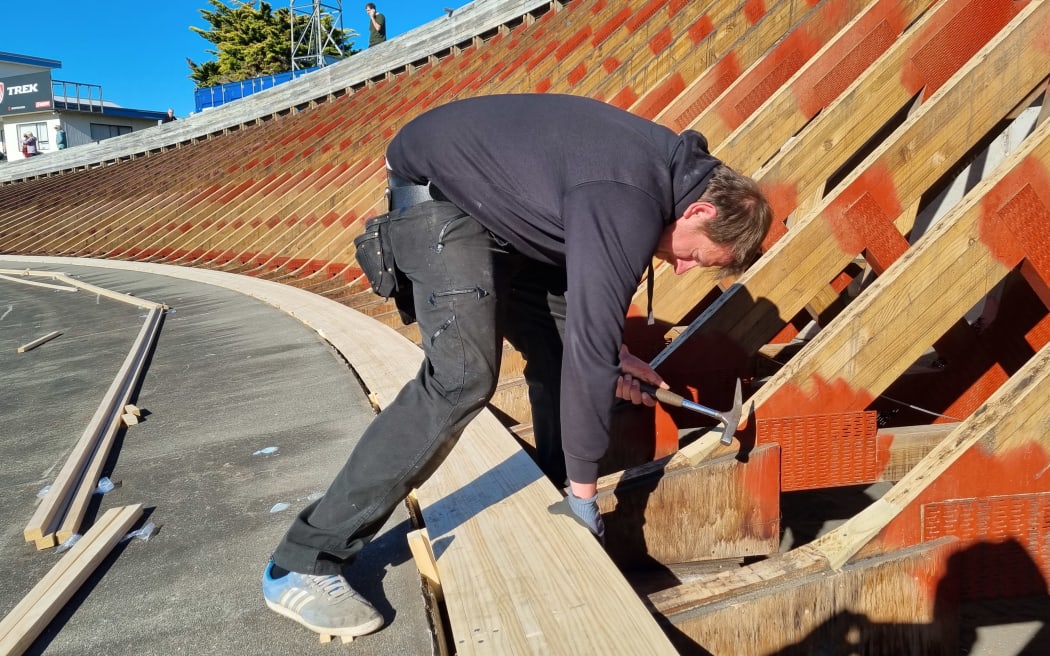
The new track is being hand nailed with about 300,000 nails. Photo: RNZ / Robin Martin
Velotrack's carpenters were hand-nailing it into place.
"It's all a hand nail system. This allows you to get the compact joints and normally on a velodrome, on 250m track, you're talking about 260,000 nails, but because this is an external timber it's slightly narrower.
"This allows a greater flexibility in the corners, so we've actually got 25 percent more timber. So, it will be over 300,000 nails by the time the job's finished. If you lay it all end-to-end you'll probably come in close to 75 kilometres of timber."
Former New Zealand track cycling coach and Whanganui Cycling patron Ron Cheatley still dreamed of the velodrome having a roof.
"We're pretty much look[ing] at this as stage one to be fair and that's fine. We know how the economy is in New Zealand at the moment and we know how a lot of people out there are hurting.
"It's not the time to be pushing for the roof at this stage, but I hope that in the future that we will get to it and, you know, in the past we've had both major political parties, National and Labour, offer $6 million to the roof."
Cheatley said the repaired velodrome would not try and compete with the indoor velodromes at Cambridge and Invercargill and would instead focus on up-and-coming cyclists.
"This one will be more like development for youth and the kids and there's a lot of interest out there from the schools about getting this running again.
"We'll develop riders here that will go onto those international velodromes and we'll have some big events here as well."
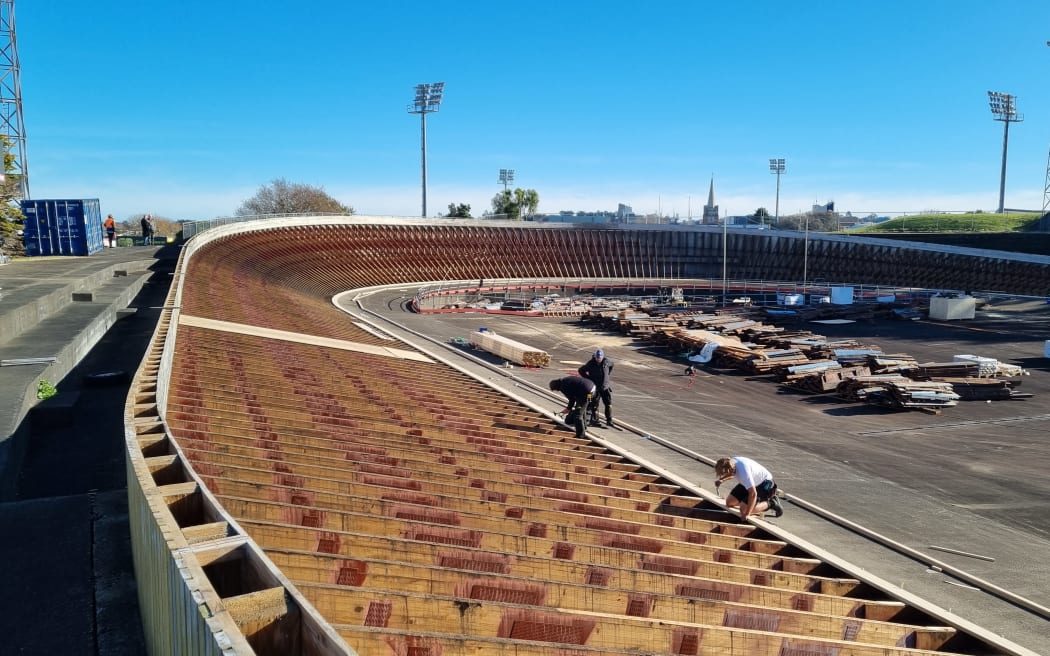
The new track is being hand nailed with about 300,000 nails. Laid end to end the new accoya timber would stretch 75km. Photo: RNZ / Robin Martin
Last week the Whanganui District Council held an open day to update people on the project and the public was also invited to salvage bundles of the old track.
Mike O'Donnell was having second thoughts about his plans.
"They are bigger than I thought. When I got to the gate here I asked for a couple of bundles if available and they said they're about 3 metres long and 12 pieces, but looking from here I might need a dump truck."
He was hoping to build some sheds with the timber.
Tom Wilson also had ideas for it.
"Garden furniture, stakes for the garden. I'm a keen gardener. And apparently some of it is rotten, so that'll be firewood."
John Cowper was also thinking about the garden.
"I might just put it around the garden to put a barrier between the grass and the flowers."
Cheatley had also grabbed a souvenir.
"Yeah, I've got some timber both the old and the new. Just as a keep sake, just small bits. I don't need a big pile of the rotting stuff."
The new track was expected to be completed inside two months.
The council said any future review of velodrome facilities would include the merits of a roof.
